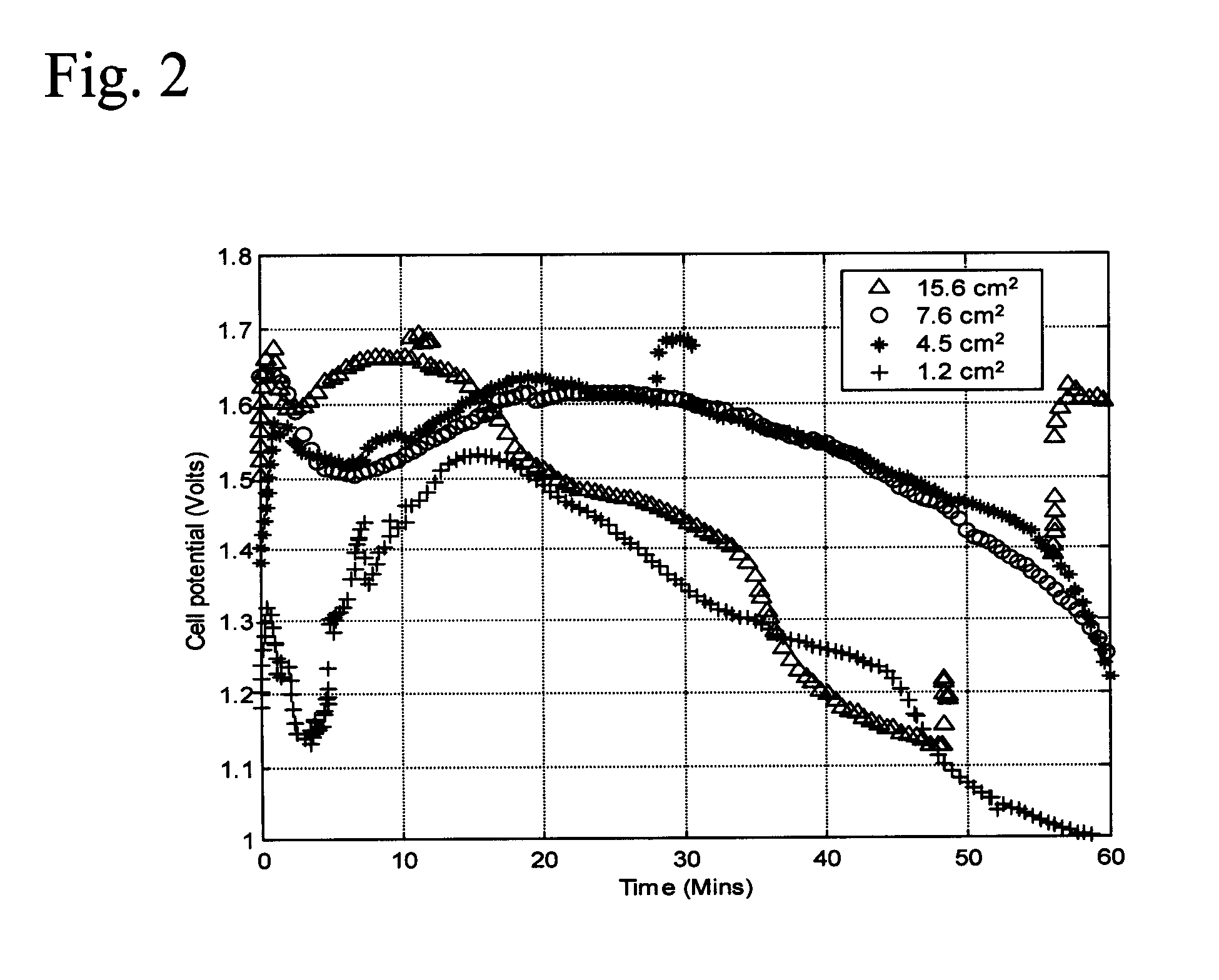Aluminum and solid alkali peroxide galvanic cell
a solid alkali peroxide and galvanic cell technology, applied in the field of aluminum and solid alkali peroxide galvanic cells, can solve the problems of reducing the energy output of the cell well below the theoretical value, reducing the efficiency of the aluminum anode, and unable to achieve an efficient cathode reaction at a sufficient cathode potential, so as to achieve the effect of improving the energy released
- Summary
- Abstract
- Description
- Claims
- Application Information
AI Technical Summary
Benefits of technology
Problems solved by technology
Method used
Image
Examples
Embodiment Construction
[0037]In the following detailed description of the preferred embodiments, reference is made to the accompanying drawings, which form a part thereof, and within which are shown by way of illustration specific embodiments by which the invention may be practiced. It is to be understood that other embodiments may be utilized and structural changes may be made without departing from the scope of the invention.
[0038]Galvanic cells based upon aluminum as the anode are attractive because of the transfer of three electrons at a large oxidation potential. Problems arising from electrode scaling and competitive side reactions producing hydrogen and oxygen as products have limited the practical use of aluminum anode galvanic cells. Part of the source of the problem arises from failure to match the cathode reactions of galvanic cells using an aluminum anode to the chemistry of aluminum in order to obtain optimum energy output.
[0039]In accordance with the present invention, a galvanic cell is pre...
PUM
 Login to View More
Login to View More Abstract
Description
Claims
Application Information
 Login to View More
Login to View More - R&D Engineer
- R&D Manager
- IP Professional
- Industry Leading Data Capabilities
- Powerful AI technology
- Patent DNA Extraction
Browse by: Latest US Patents, China's latest patents, Technical Efficacy Thesaurus, Application Domain, Technology Topic, Popular Technical Reports.
© 2024 PatSnap. All rights reserved.Legal|Privacy policy|Modern Slavery Act Transparency Statement|Sitemap|About US| Contact US: help@patsnap.com










